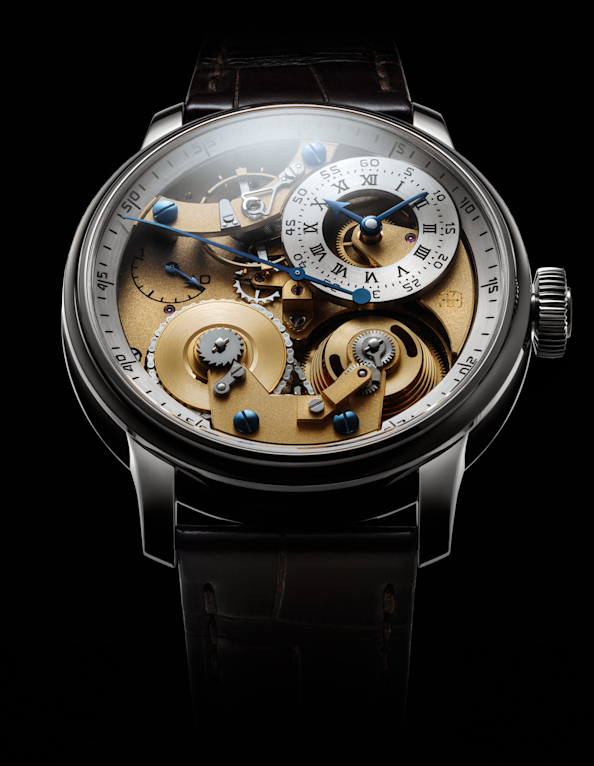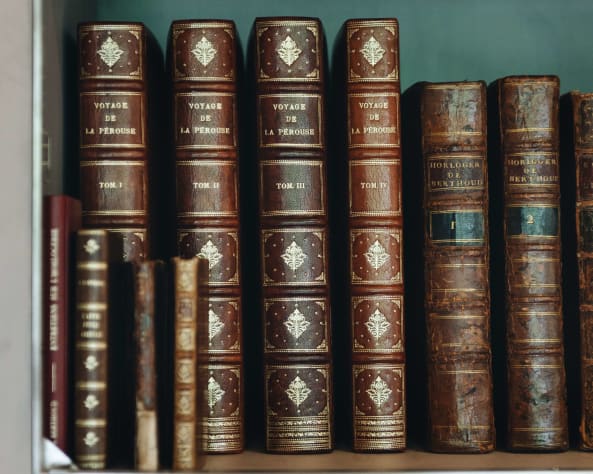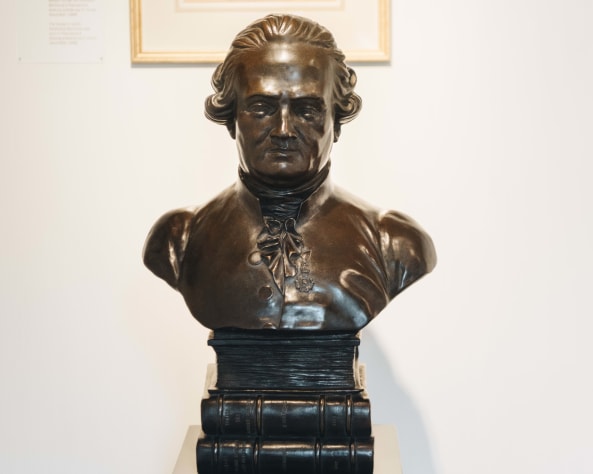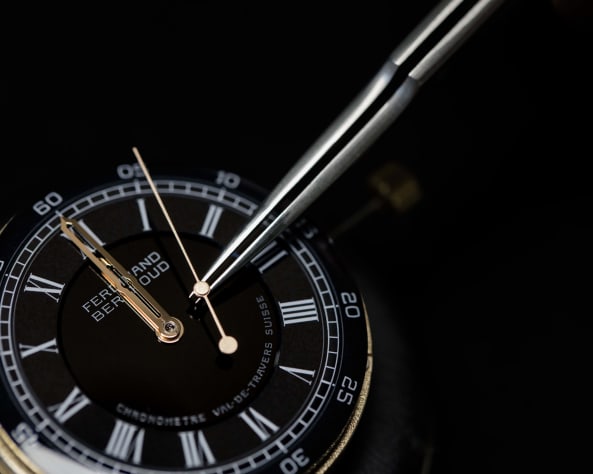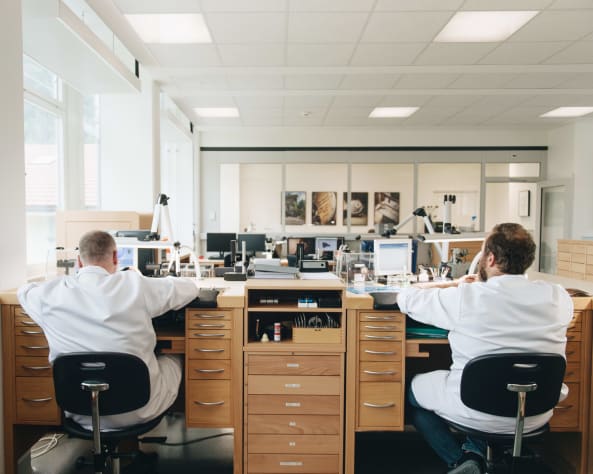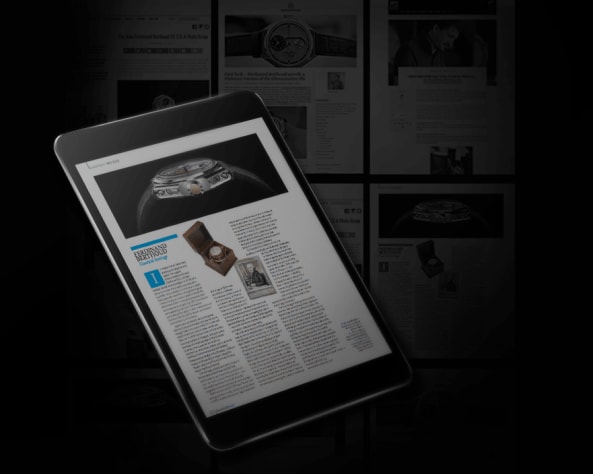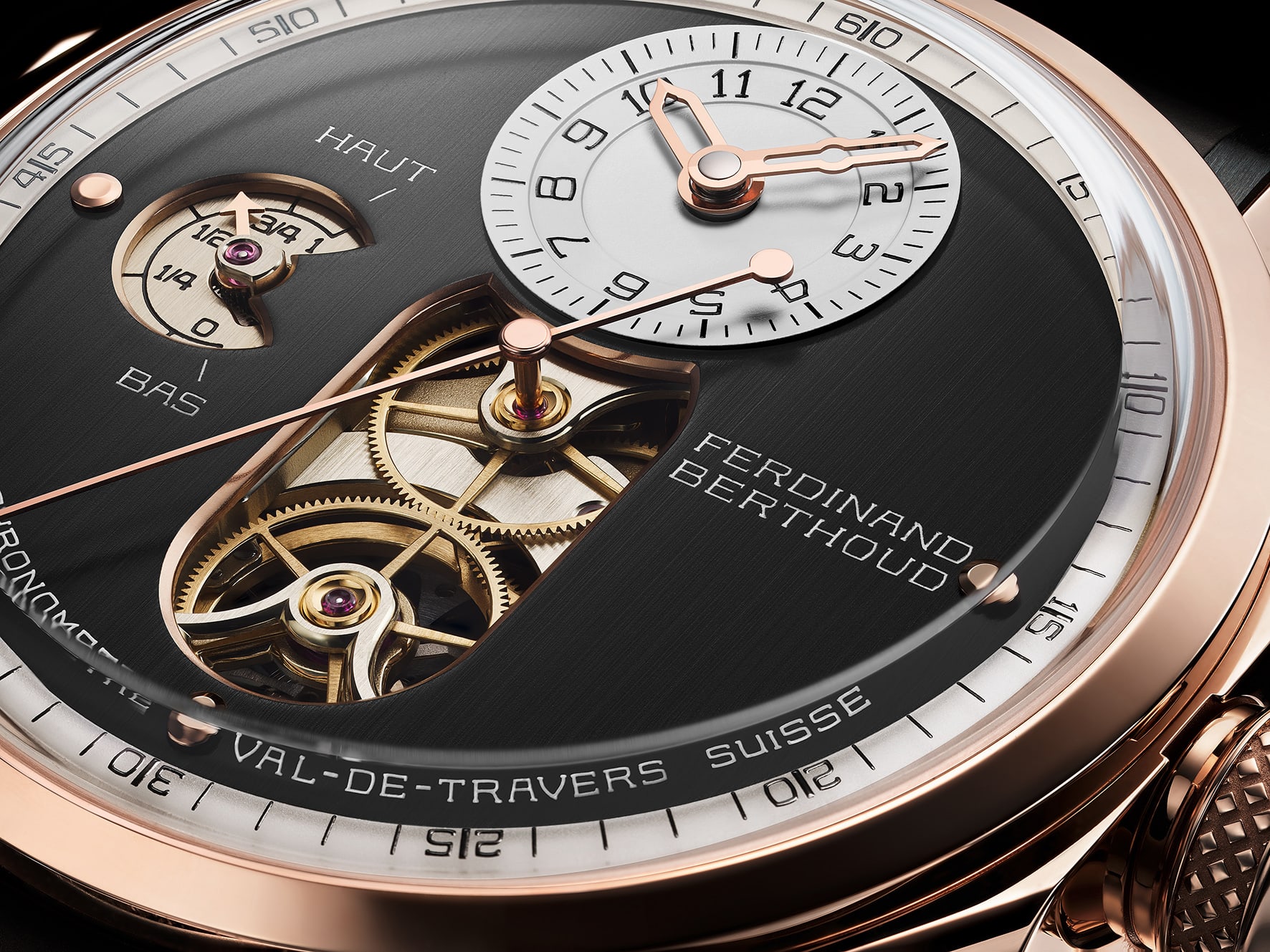
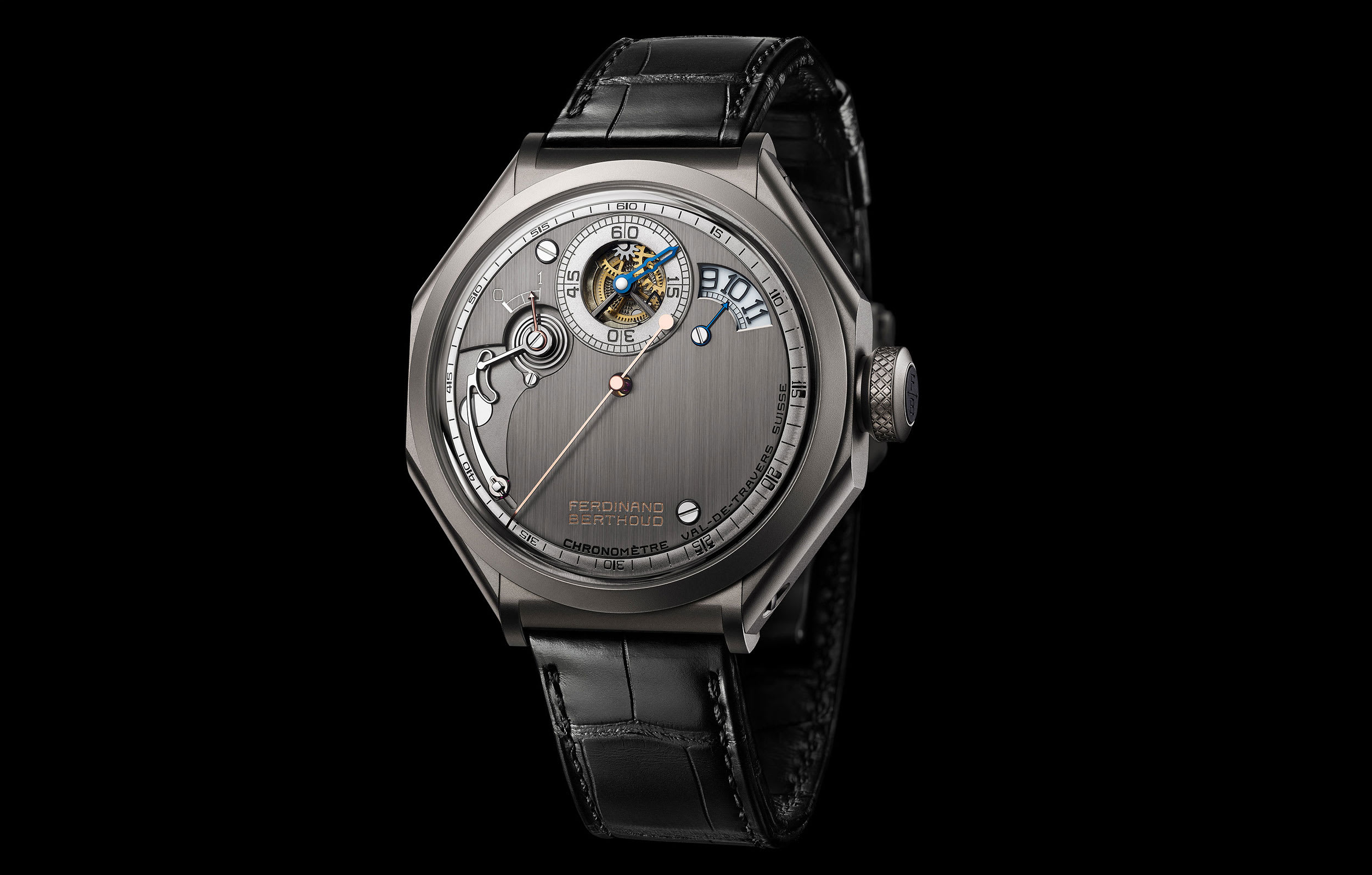
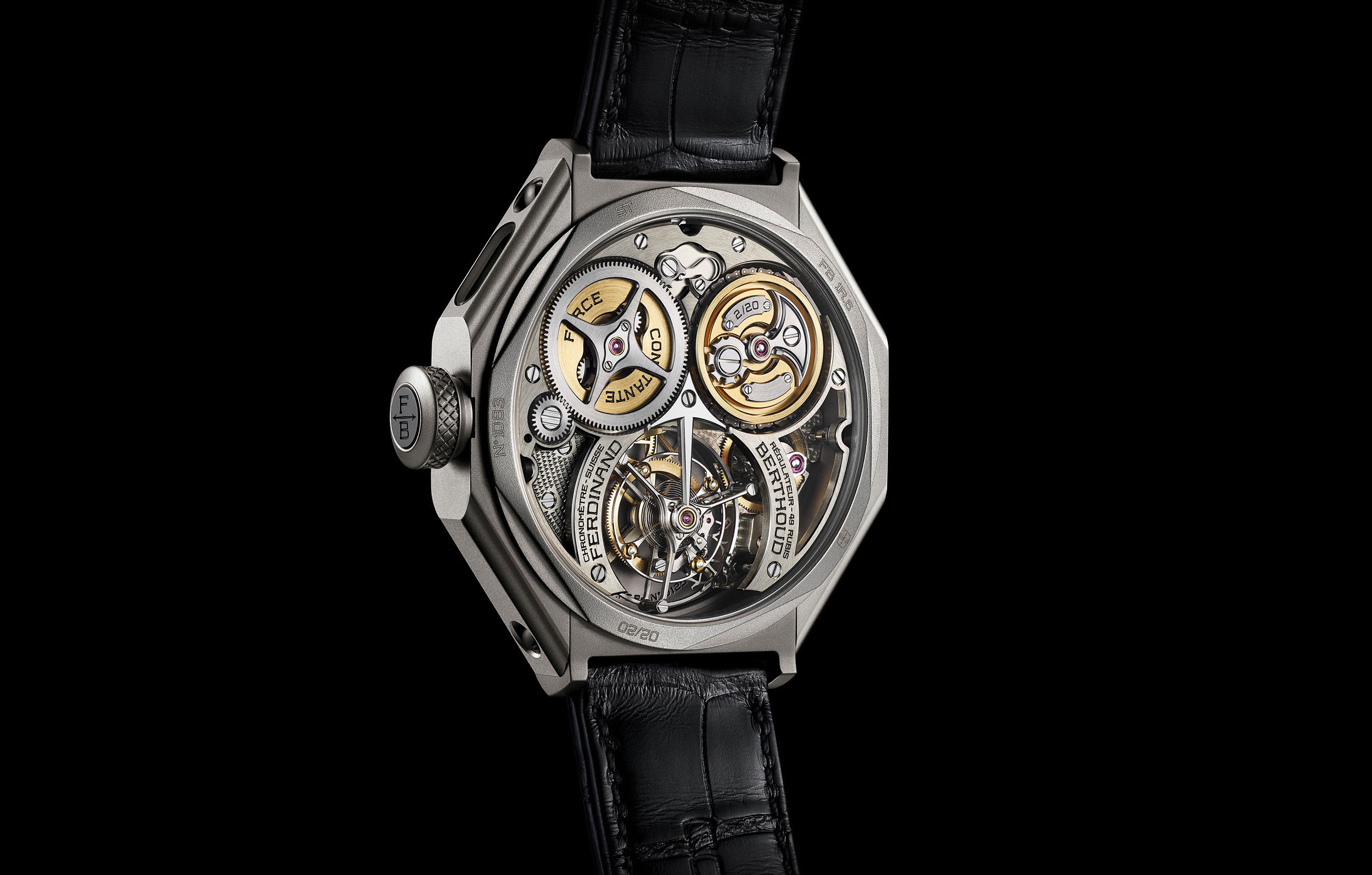
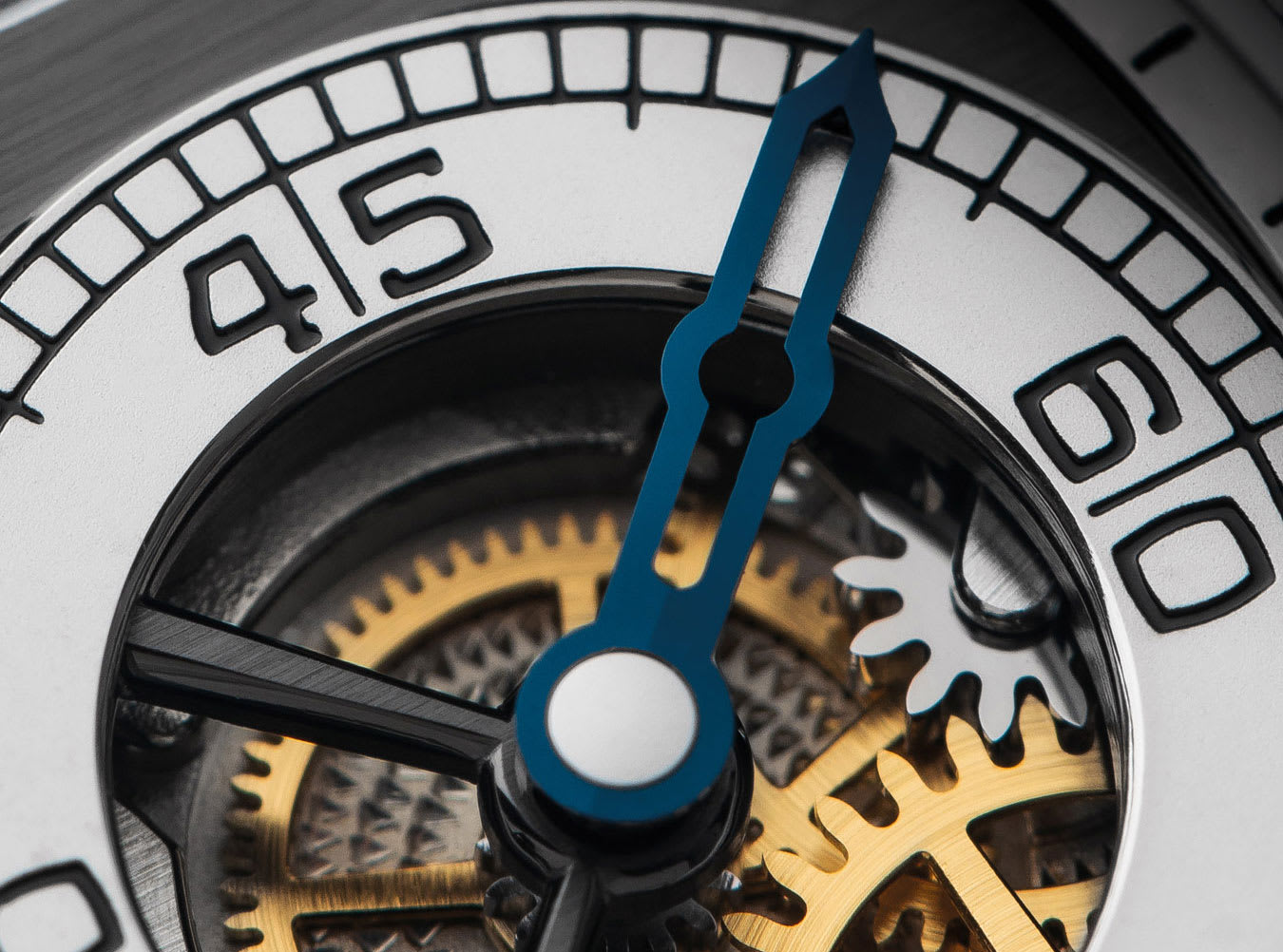
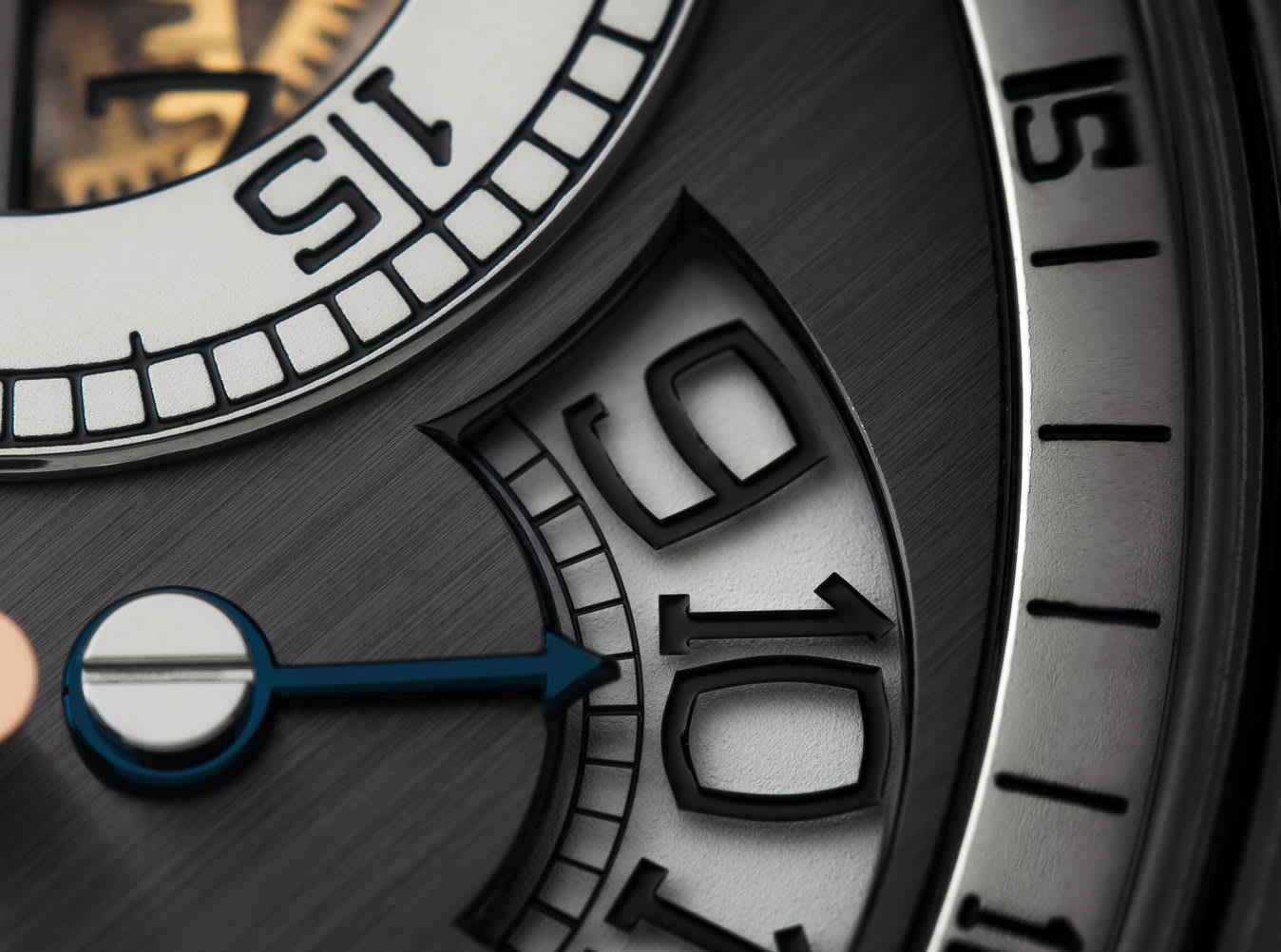
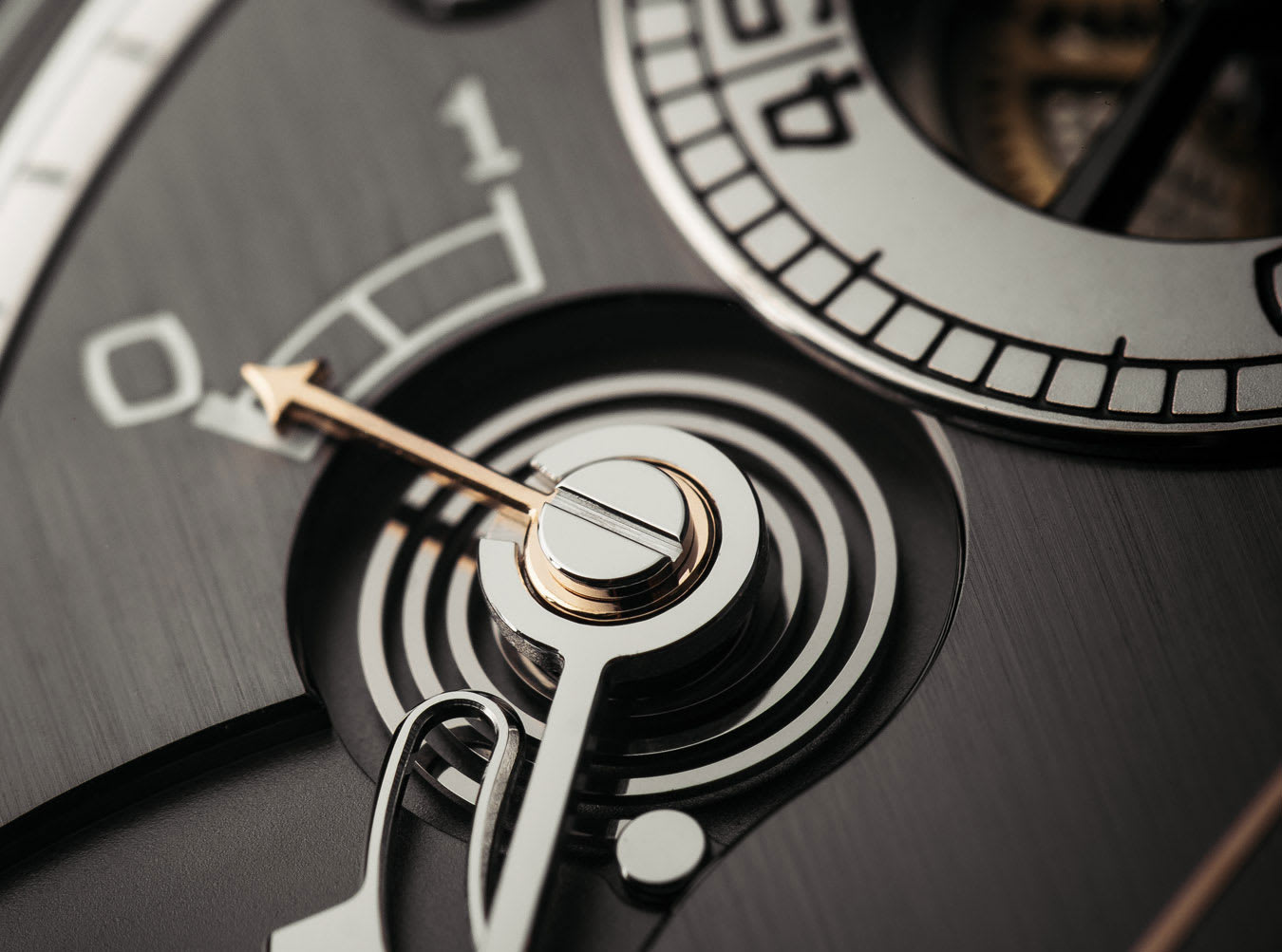
The FB 1R.6-1 N° 06/20 regulator is competing in the "chronometry" category. The Manufacture offers a behind-the-scenes look at the inner workings of the movement powering a 20-piece limited series and shares the results of its own tests.
For nearly 20 years, the Grand Prix d’Horlogerie de Genève has been rewarding exceptional watch creations for both their technical and aesthetic qualities, in several distinct categories.
Among these, "Chronometry" occupies a special place. This very recent category (since 2018) is intended for "mechanical watches comprising at least one tourbillon and/or a special escapement or another development improving chronometry (precision timekeeping". The Chronomètre FB 1R.6-1 with tourbillon and constant force fulfils all these characteristics, making it a very unique and special case among the finalists.
An exceptional model
The Chronomètre FB 1R.6-1 is a limited and numbered series of only 20. It is the only regulator-type model to feature in this pre-selection. The choice of this historical display in itself meets a chronometric requirement: dissociating the expression of hours, minutes and seconds in order to facilitate individual reading. This was a fundamental notion for Ferdinand Berthoud in the production of his marine clocks and watches, essential for the calculation of longitude.
The Chronomètre FB 1R.6-1 is also the only one whose tourbillon does not itself display the seconds, but instead drives a slender seconds hand in the dial centre. This "tourbillon with direct-drive centre seconds" construction is patented and perfectly symbolises the quest for precision behind the creations of Chronométrie Ferdinand Berthoud.
Finally, this FB 1R regulator also stands out in terms of its architecture: its mechanical components are framed by 18 bridges, stabilised by titanium pillars, a construction mode characteristic of 18th century marine chronometers. Its barrel and its inverted upside-down fusee are both suspended, held to the mainplate only via a central axis. An original power-reserve mechanism – with a likewise suspended and patented moving cone – provides an extremely precise indication of the movement’s autonomy, a variable closely linked to its chronometric precision.
Officially chronometer-certified movements
Chronométrie Ferdinand Berthoud submits all movements assembled and adjusted to the Official Swiss Official Chronometer Testing Institute, a recognised external and independent authority, which measures and controls the accuracy of movements for 15 consecutive days according to seven criteria imposed by ISO 3159. All criteria must be fully met in order to earn the "Chronometer" title.
In the case of the Chronomètre FB 1R regulator, 15 movements, including the one equipping the No. 6/20 watch currently competing in the GPHG, have been certified to date. Two variables, expressed hereafter in terms of the mean results achieved by these 15 calibres, attest to the accuracy of the FB-T.FC.R. calibre:
- 1.66 seconds of daily variation in rate, in six different positions. This is the average deviation displayed by the model in daily wear. The regulator-type Chronomètre FB 1R therefore displays a drift of just +1.6 seconds per day, a very high achievement in terms of performance.
- 0.35 seconds/day in restart mode. This variable serves to measure the precision of the watch over the entire length of its power reserve. In other words, it must be as accurate when it is 100% wound as at the end of its power reserve or when resuming operation. The result achieved (0.35 s/day) therefore attests that the FB 1R model is almost equally accurate throughout its power reserve of at least 53 hours. In particular, the watch is capable of ensuring perfect precision timing right from the first impulse given to the mainspring by the winding crown, a performance typical of constant-force mechanisms with fusee-and-chain transmission.
Specific tests for this model competing in the GPHG
Chronométrie Ferdinand Berthoud also submitted the carburised steel regulator No. 6/20 submitted for the GPHG to two complete Fleuritest cycles, at the beginning of the watchmaking season (August 12th and 20th 2019).
The Fleurier Quality Foundation performs a functional test on cased-up watches using the “Fleuritest” simulator, which reproduces a cycle alternating between active, very active and calm phases. Variations in speed are analysed by digital cameras. It is currently one of the most demanding tests on the market, since it faithfully reproduces the real conditions of a customer who wears his watch every day.
The No. 6/20 regulator was measured 18 consecutive times during its entire power reserve (more than 53 hours).
Despite the incessant variations in the position of the timepiece, simulating the real conditions of a watch worn on the wrist during a typical day, this model emerged from this test with only tiny deviations. In 33 out of 36 cases, these amounted to less than one second, while in almost half of the cases, the figure was even less than or equal to 0.5 seconds/day.
These results demonstrate the chronometric performance of the FB 1R.6-1 No. 6/20 model throughout the test cycle and its power reserve, whether complete or almost entirely depleted. Technically, this chronometric reliability stems in particular from the Malte cross stopwork device fitted to the FB-T.FC.R. calibre. This limits the winding travel of the mainspring (the chain is wrapped six times around the barrel) and keeps the latter in a permanent state of tension; the winding action thus focuses only on the "optimal" part of the spring which, together with the fusee, contributes to providing equal energy throughout the movement's operation. This device allows a fast restart, from the first turn of the crown, with almost perfect timing.
The fusee-and-chain transmission ensures the distribution of this energy (also called torque). This "constant force" process was already present in Ferdinand Berthoud's marine chronometers and now been optimised by Chronométrie Ferdinand Berthoud. The movement normally stops running while this type of mechanism is being wound. To remedy this, the FB-T.FC.R calibre is equipped with an original patented differential gear design, enabling the balance wheel to continue its oscillations during winding and thus to preserve the chronometric properties of the movement.
By passing on this tangible information, Chronométrie Ferdinand Berthoud is following a principle dear to Ferdinand Berthoud: producing timepieces that meet a practical need for users, while sharing its research results and scientific knowledge with them. In keeping with the spirit characterising the Age of Enlightenment during which Ferdinand Berthoud lived, Chronométrie Ferdinand Berthoud continues to shed light on the technical aspects cherished by the Master Horologist in order to reveal their full complexity.
